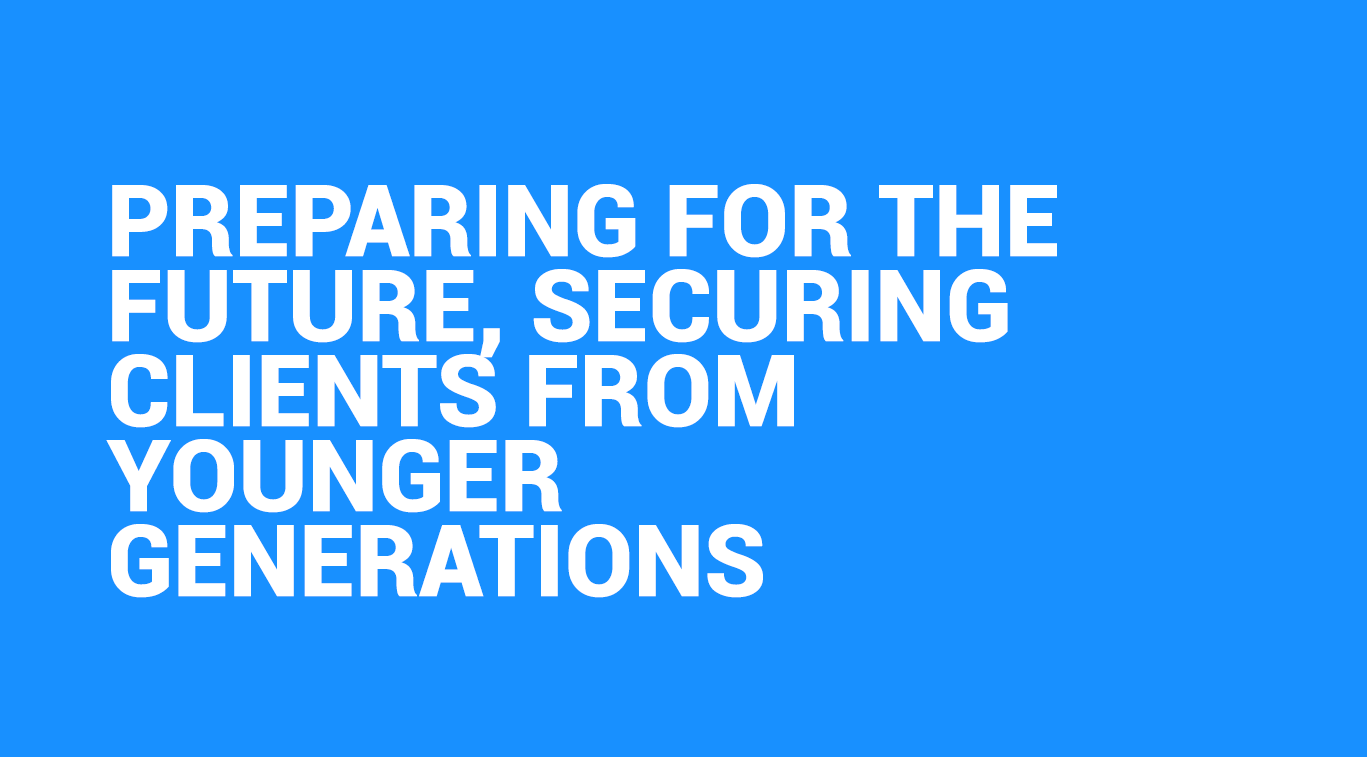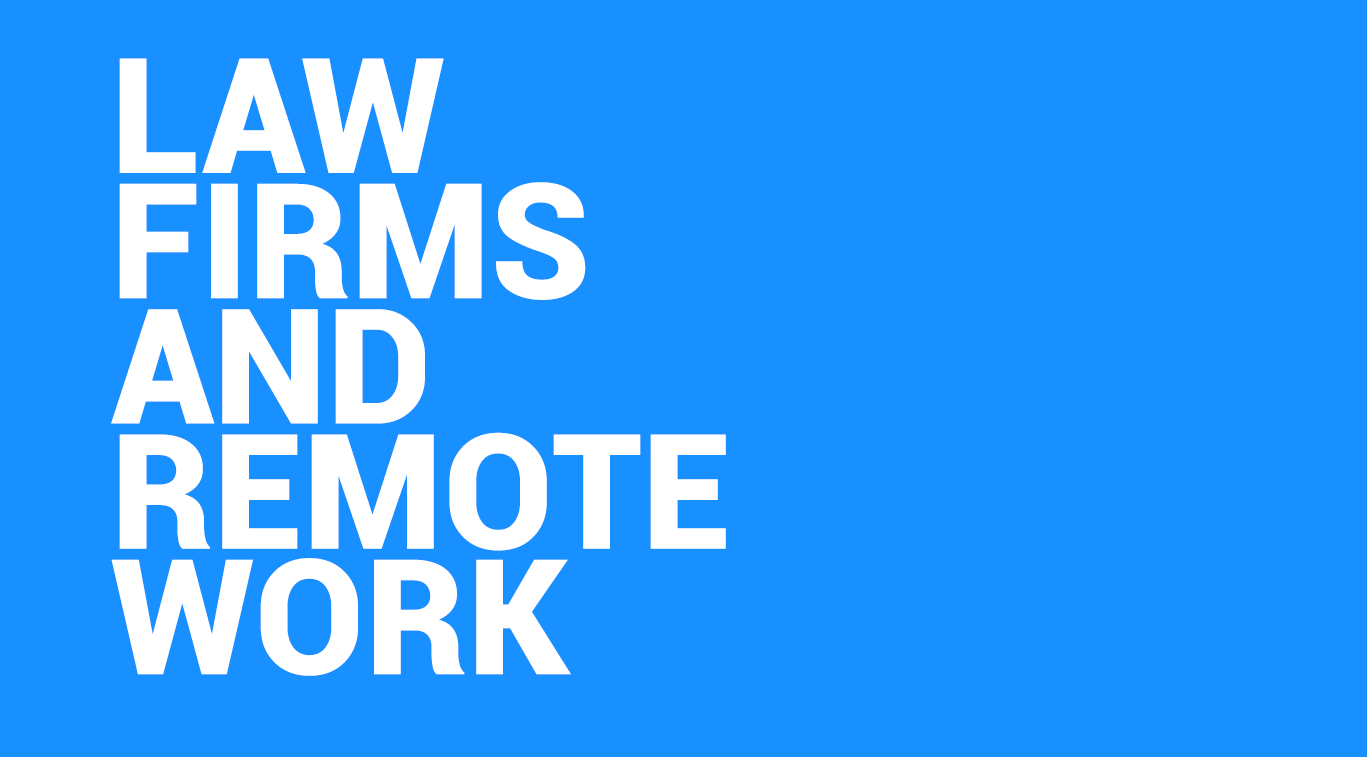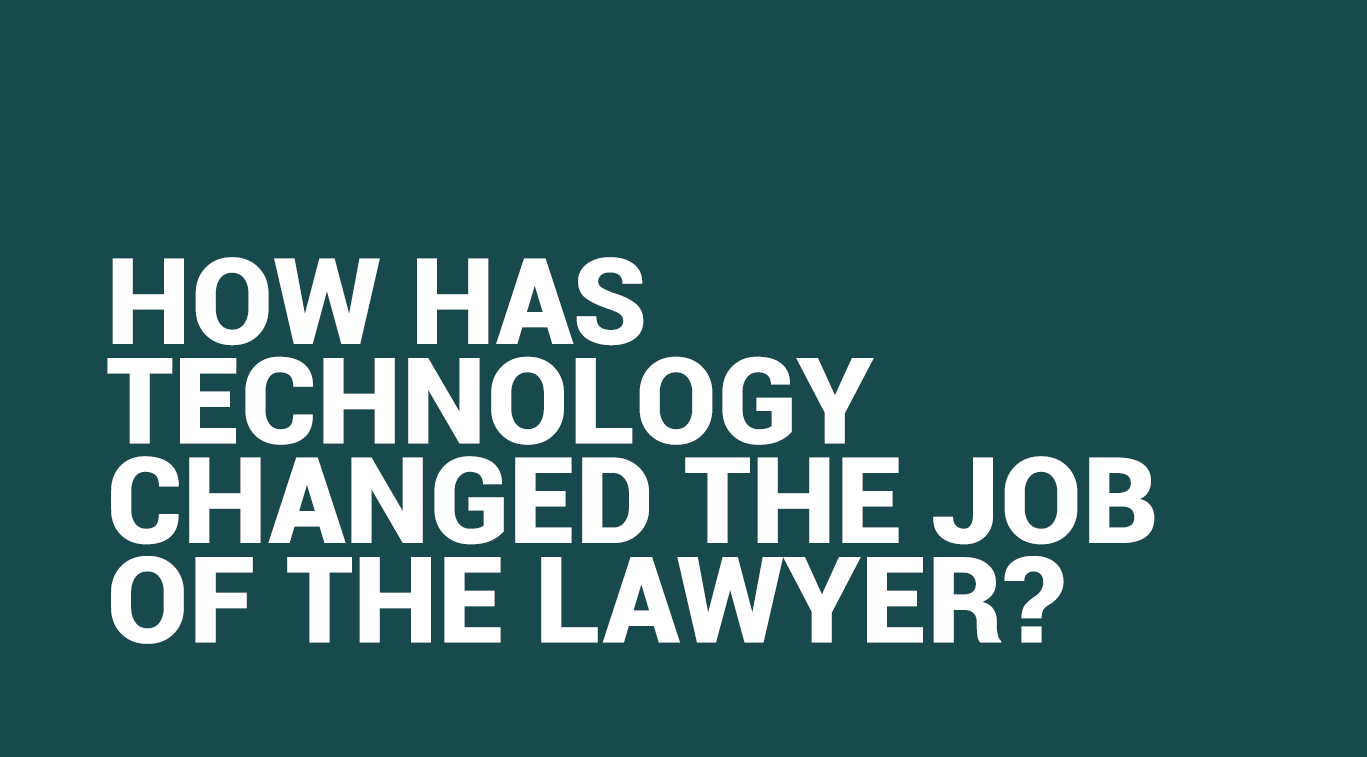Preparing for the Future, Securing Clients from Younger Generations
Written by Ghost Writer
Blogger

The foreseeable future of legal consumers is that of Generation X, Millennials and Generation Z. Firms that do not prepare to cater to the interests and sensitivities of these younger age groups risk falling behind their competitors. It is most likely that the demands of younger customers will revolve around flexibility, expedience and security in their dealings with their chosen firm. While these tenets are, at first glance, tricky to attain, they can be easily reached with the aid of legal tech.
Preparing for the Future, Securing Clients from Younger Generations
Just as times are a changing, clients are too. A generous percentage of legal business traffic will always be that of ‘private client’ law. Private client law involves the provision of legal counsel on matters of private, usually familial or personal finance-related, affairs, such as generic wealth management, Wills, Trusts, Probate and divorces.
Necessarily, such legal practice involves careful management of the sensibilities, emotions and interests of a private client, i.e. a regular, though sometimes not so regular, private individual acting outside of any business or organisational capacity. The efficient and successful management of these interests is properly and consistently achieved through a cultivated and masterful use of soft skills. While this term refers to an umbrella of skill sets, from time management through to general ‘soft’ creativity, it also refers to the ability to network and conflict resolution. Since most legal issues are either high stakes or contentious, or both, the ability to reassure, compassionately direct and effectively manage the expectations of clients is paramount to the auspicious running of a legal practice.
Many lawyers have such soft skills, or core competencies, and can employ them with great finesse. However, humans are anything but constant and the changing axes of interests, emotions and sensibilities go hand-in-hand with generational value drift. While such value shifting ranges from the subtle to the pronounced, any desynchronization between lawyer and client can be detrimental, leading clients to feel that the level of legal service they receive is sub-par at best and unacceptable at worst.
This undesirable potentiality affects more than just the quotidian running of a firm, but also its marketing potential. As discussed elsewhere on this blog, many, especially private, clients find their legal solutions through word of mouth, as much, if not more, than they do from marketing. As such, an off-kilter, cringe-inducing or outright enraging interaction with a legal adviser is liable to solicit an unfortunately negative or unfavourable neutral word-of-mouth review. Since client footfall and retention are essential to ensuring the financial health of a law firm, it is imperative that a lawyer’s soft skill of interpersonal interaction keeps abreast of the times.
This can become exceptionally difficult when firm shot-callers are faced with rapidly changing clientele. Admittedly, the baby-boomer generation largely outnumbers generation x, millennials and generation z (in the UK at least), and, matter-of-factly, holds the majority of the wealth to boot. This means that baby boomers will, by and large, make up the most important, in financial terms, segment of a private client focused firm’s customer base. However, a rapidly expanding segment of the legal sector’s market share will be dominated by the younger, increasingly cash-strapped and value diverse generations.
How then, might lawyers succeed in courting these younger groups to attain and retain their business? A myopic analyst might observe that just as an escalating share of clients hail from younger age groups, so too will incoming cohorts of lawyers be from said generations, hopefully bringing the requisite soft skills to productively and consistently interact with younger consumers. However, this assumes that younger entrants to law firms will come in sufficient quantities to meet this prospective shortfall in soft skills and will be able to rise high enough in the hierarchy of law firms to make big impacts on the dynamics of client acquisition and retention. Indeed, even if these dual assumptions prove to be correct, it would still be beneficial for forward-looking legal practice managers to prepare their firms operating guidelines, doctrine and infrastructure to prepare for this developing shift in consumer base, if not only to simply aid more apt successors.
Below are three likely pillars or axes upon which a younger generation’s consumer confidence will rest;
Expediency:
Younger generations live in an age where the internet and its various associated applications make the accessibility of information at high speed not only a reality, but, now, a necessity. As a consequence, it is often now expected of providers of a multitude of products and services to give access to these goods at speed.
A matter of mere years ago, Amazon Prime’s next-day delivery deal was considered to be a pioneering futurism. Today, companies that do not come close to providing goods or services in a couple of days if not the next day, without good reason, attract the ire of impatient customers and even bad reviews on this basis, a trend that is likely to continue.
Of course, while being cautious not to inadvertently sneer at the complexity of supply chain logistics, the law is not an overnight endeavour, at least it is not if it is done well and done safely. Therefore, conveyancing or divorce negotiations are not something that can be done in a matter of days or hours, and consumers who expect as much are bordering on the delusional. However, this does not mean that younger, and arguably savvier, consumers will tolerate unexplained delays.
So if not all corners can be cut, legal practices should be sure they cut the right corners to provide an expedient service to their clients. Here, legal technology can cut time wasting as efficiently as it cuts overheads and costs. This can occur from two directions, that being done with professional services CRM software and managed cloud services for law firms, which together allow for both the easy transmission of legal documentation and the speedy updating of clients as to where their case is at any given moment. This means that clients’ ease of access, and therefore satisfaction, can seamlessly integrate with a holistic practice case management system.
From a second approach, office document management software and broader matter management systems can make office document management and matter management easier and speedier. With lawyers minimising their own pain points the length of time a legal issue can take is paired back to only the essentials of legal analysis.
With these two approaches working in tandem, law firms can ensure their meet the high expectations of efficiency demanding
Flexibility:
In a similar vein, younger generations want digital and distant solutions to minimise and digitise their interactions with their instructed legal practice. The days of visiting firms, outside of necessary visits, are gone and redundant processes associated with such days should be dispensed with. For example, bank transfers or the now-archaic in-person payment system should be alleviated by even a simple legal billing software package. For example, legal billing software for small firms can turn painstaking card retrieval processes into simple portals that ensure no inadvertently hidden bills or tedious payment processes arise. A similar doctrine to this also applies to law office CRM, enabling clients to contact their lawyers from a distance in a flexible format.
Digital Security and Accessibility:
Cloud computing data security is equally as important to clients of law firms as it is to firms themselves. Younger generations are more tech-savvy than their forebears and so not only demand a high standard of protection, by virtue of their deep understanding of doxxing, data theft and the other myriad dangers of internet usage, but may also be capable of spotting, in some instances, the flaws which legal practices are making. With matters as sensitive as that of law, the tolerance for digitally reckless firms will be low, and a reputation for poor data management and security could stray from the realm of the financially detrimental into that of the financially lethal. Luckily, by simply picking a powerful and well-crafted legal tech solution firms can ensure that they are protected, and by extension so too are their customers, in their digital operations.
Conclusion:
While the day when young generations make up the bulk of law firms’ clientele is not yet here, the wise would be prudent to be prepared. In this endeavour, one of the most effective strategies law firm decision makers could employ is that of laying down the culture and infrastructure of expediency and flexibility. This is best achieved through digital means, but then so too must this digitisation of service come with apt digital security. Luckily these tenants can be effectively and comprehensively managed and combined through the powerful tool of legal technology.
References:
[1] ‘Millennials Coming of Age’, Goldman Sachs, at https://www.goldmansachs.com/insights/archive/millennials/
[2] ‘How to Effectively Market to a Millennial Audience: 3 Tips?’ at https://www.google.com/search?q=how+should+businesses+prepare+to+cater+for+millennials&oq=how+should+businesses+prepare+to+cater+for+millennials&aqs=chrome..69i57j33i160l2.9993j0j4&sourceid=chrome&ie=UTF-8
[3] ‘Private Client Law Explained’ https://www.chambersstudent.co.uk/legal-practice-areas/private-client-and-charities/private-client-law-explained
[4] ‘8 Modern Tips for Marketing to Millennials’, at https://blog.hubspot.com/marketing/marketing-to-millennials
[5] ‘Its Time For Law Firms to Start Talking About Gen Z’ at https://www.mlaglobal.com/en-gb/insights/articles/its-time-for-law-firms-to-start-talking-about-gen-z
[6] ‘Gen-Z: Shaping Tomorrow’s Law Firm Culture’ at https://www.mlaglobal.com/en-gb/insights/research/gen-z-shaping-tomorrows-law-firm-culture
[7] ‘What Is Business Flexibility?’ at https://www.smartcapitalmind.com/what-is-business-flexibility.htm#:~:text=Business%20flexibility%20refers%20to%20a,thus%20remain%20a%20profitable%20enterprise.
[8] ‘What is Digital Security: Overview, Types and Applications Explained’ at https://www.simplilearn.com/what-is-digital-security-article#:~:text=Digital%20security%20is%20the%20collective,biometrics%2C%20and%20secured%20personal%20devices.
[9] ‘Millennials, Gen Z, and the Rising Demand for Corporate Social Responsibility’ at https://assets.ctfassets.net/n3ohnvkomoi9/7nIZx2MbuVJG1oKq4gTBkn/b346973f1c7dae7c99e13111eef9e4ba/Millennials__Gen_Z__and_the_Rising_Demand_for_Corporate_Social_Responsibility.pdf
[10] ‘An Overview of Cloud Security’, at https://www.ibm.com/uk-en/topics/cloud-security#:~:text=Cloud%20security%20is%20a%20collection,as%20part%20of%20their%20infrastructure.








